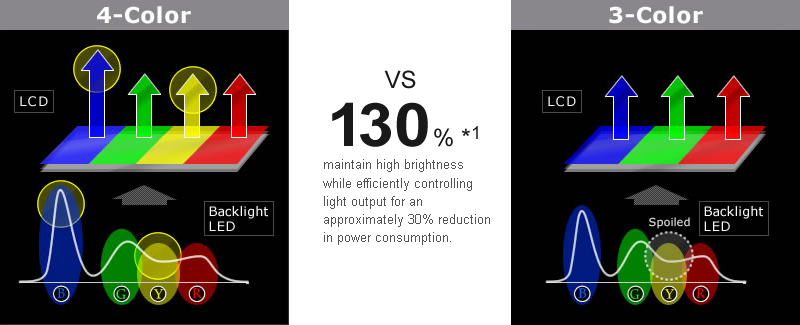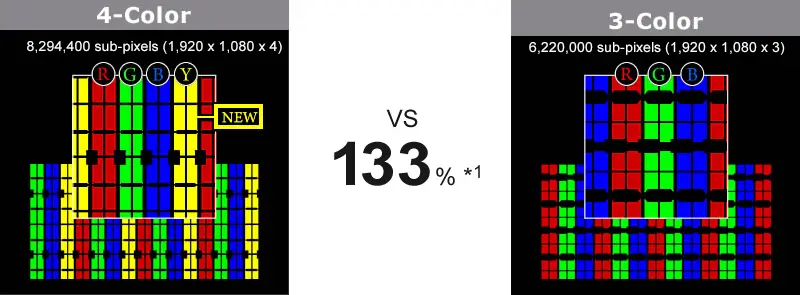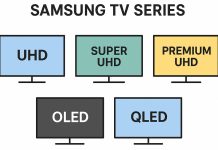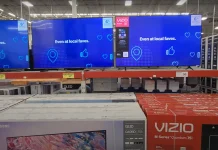In the mid-2000s, Sharp was the leader in the production of large television panels, controlling more than half of the LCD panel market. This segment became a strategic priority for the company, and Sharp invested heavily in its development. In the early 2010s, the company’s research and development department introduced a revolutionary concept: adding a fourth pixel to the standard three-color display matrix. This technology was called YRGB or RGBY, but most people knew it by its commercial name, Quattron.
YRGB Technology (4 Colors)
The essence of this technology was the addition of a yellow subpixel to the standard red, green, and blue subpixels. Displays using this structure had several advantages, in particular improved brightness in skin tones, which naturally contain yellow components. This also contributed to an increase in the overall panel brightness.
At the same time, Sharp TVs from that period had a noticeable limitation — relatively low peak brightness. This was a deliberate technical compromise that allowed for better contrast performance.
The use of a four-subpixel structure required the integration of an additional image processing module, as the yellow subpixel needed to be controlled separately. These panels were more expensive to manufacture and were only used in high-end models.
The Decline of Sharp’s Four-Color Technology
Despite its advantages, the YRGB technology faced significant challenges. The primary issue was the high production cost. Adding a fourth pixel and developing a specialized T-CON board to manage the display substantially increased manufacturing expenses. After Samsung and LG launched new LCD panel factories, the demand for Sharp’s panels began to decline. In 2014, Sharp exited the television manufacturing business, losing its primary market for these panels. Although production continued for some time, it met with little success, as the panels were mainly used in televisions that were outsourced to third-party manufacturers under the Sharp brand.
In 2024, Sharp officially ceased production of large LCD panels, closing its factory in Sakai on August 21. The company announced plans to sell all remaining inventory by March 2025, noting that a significant number of panels had been produced in advance. Thus, the era of Sharp’s four-color LCD panels—one of the company’s most ambitious and distinctive technological projects—came to an end.







